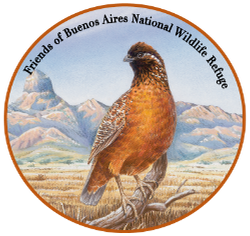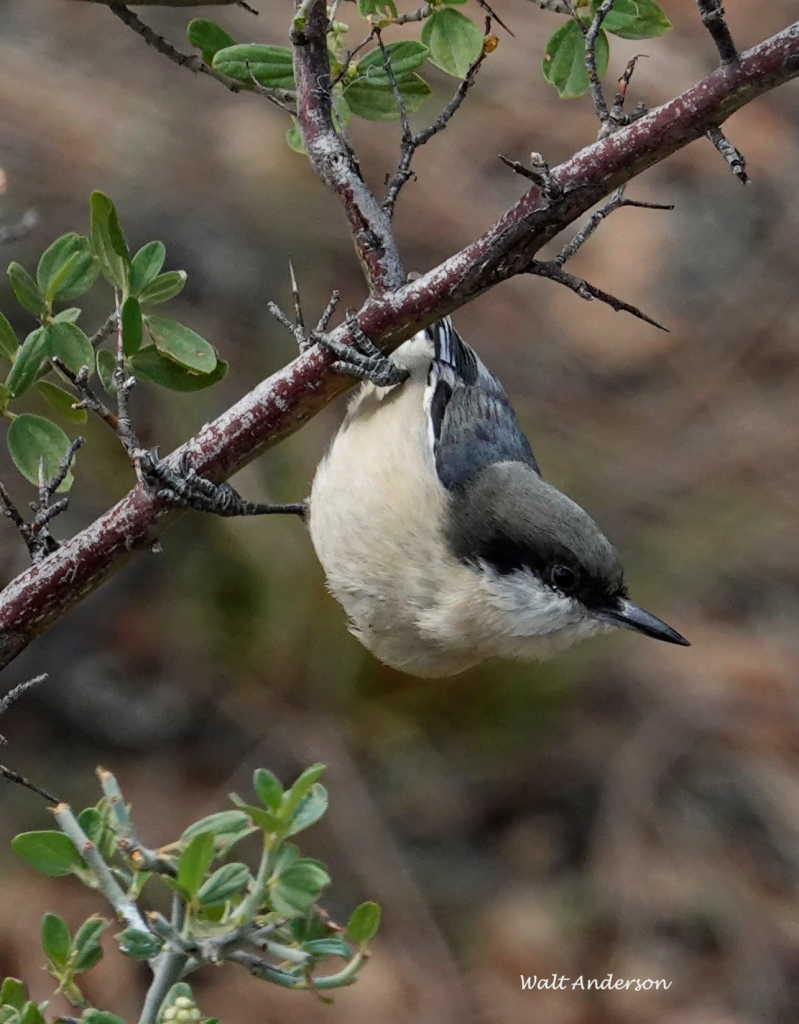
January, The Nuthatch Suite
by Walt Anderson
‘Tis the season to feature the Nuthatch Suite (no nutcrackers here, though plenty of nutcases). And what is sweeter than a sturdy little nuthatch, a bird that defies gravity on a tree trunk by often hitching its way downward, thus finding insects in the bark that those upright woodpeckers and creepers miss?
There are 24 species of nuthatches in the genus Sitta globally, but just 4 in the US. The montane forests of southern Asia seem to be the original homeland of ancestral nuthatches, for there are 15 species there, even spreading into the tropics. Their ranges have not expanded to South America or Australia, though they get close to the latter. They are stopped by Wallace’s Line, a major biogeographic barrier in Indonesia, where a deep channel separated islands even when the seas were 300 feet lower in elevation. They are also absent from Africa except for some that slipped across the Straits of Gibraltar into far northern Morocco. So we can consider them forest inhabitants across the Holarctic (North America and Eurasia).
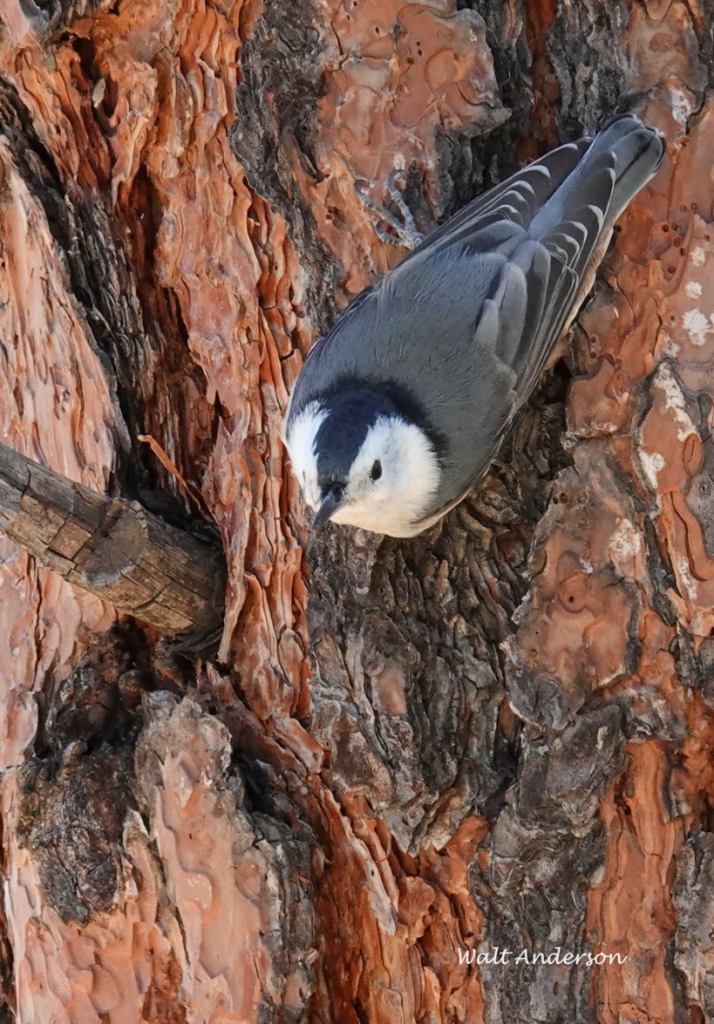
Of the three species of nuthatch in Arizona, the White-breasted is probably the most familiar to most people, as it is least fussy about specific habitats. It occurs in most forests in Arizona, from the upper edges of pinyon-juniper through pine-oak woodlands, cottonwood-willow gallery forests, and up into pine woods below the mixed-conifer zone.
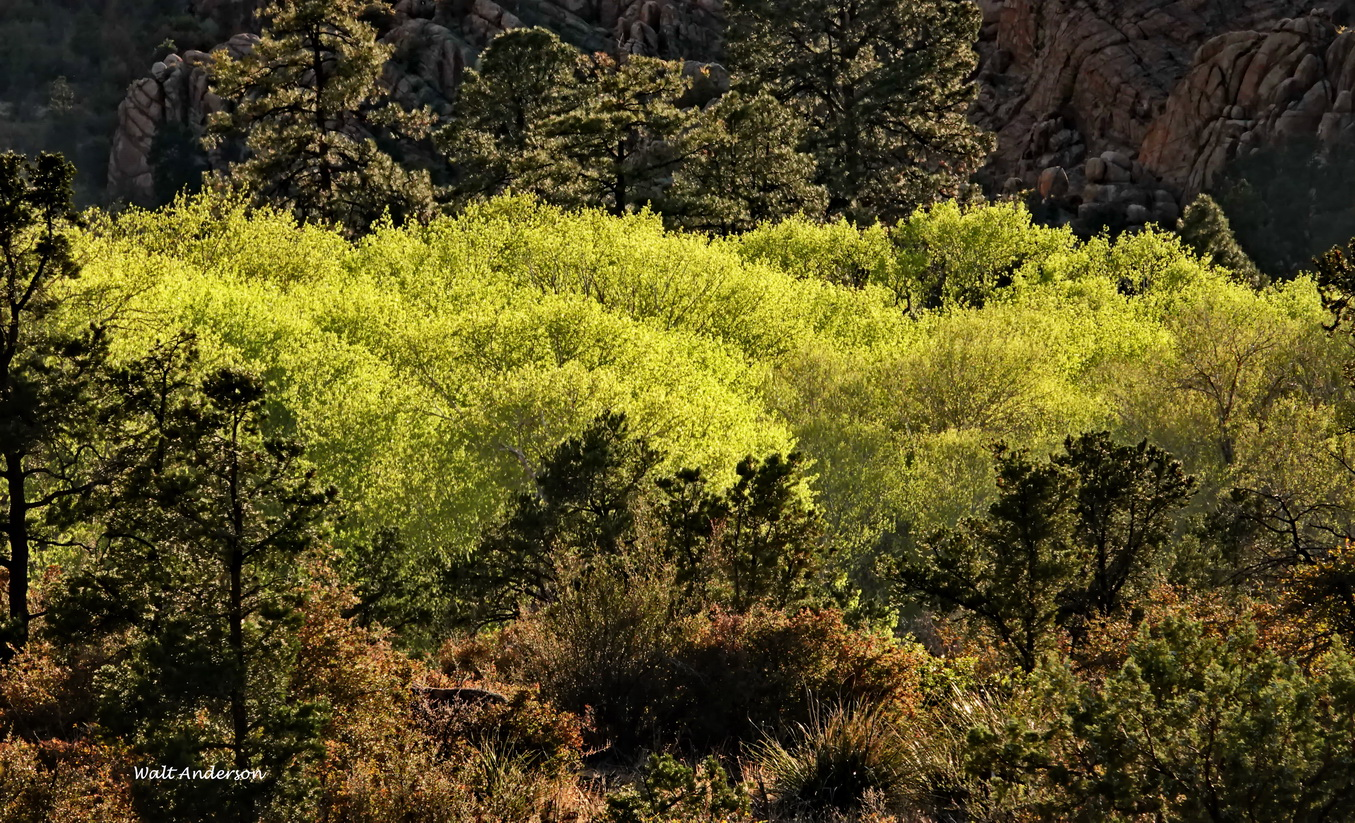
The White-breasted Nuthatch has a broad geographic range in the US today, but climate-change predictions suggest it will disappear from much of the lower 48 states while expanding into Canada and Alaska. Of course, range changes depend on more than vegetation; if food supplies are inadequate or out of synch with the nesting phenology of the birds, their populations may crash. The birds are also vulnerable to habitat fragmentation, doing poorly in small islands of otherwise-suitable habitat compared to larger, intact habitat patches. This is one reason why we are pushing for a greater Granite Dells Regional Park & Preserve. Size matters.
Here is perfect White-breasted Nuthatch habitat along Granite Creek in the Granite Dells of Prescott. What could be better than having the option of dining in a tall pine one day, a stately cottonwood the next?

Or bopping over to my place for a treat of flavorful, calorie-rich suet? Note the chisel-shaped bill upturned on the underside and the hefty feet. When visiting feeders, the White-breasted Nuthatch can deliver an impressive threat display in which it raises it bill and tail and lowers its wings. Chickadee, back off!
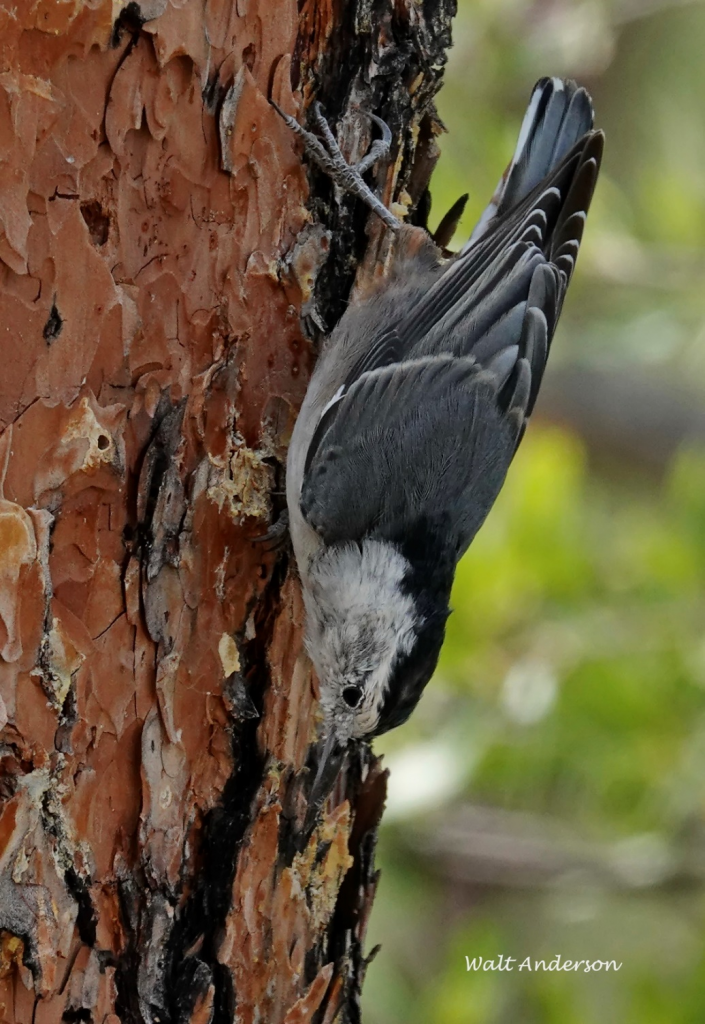
Nuthatches differ from woodpeckers and creepers by being able to navigate downhill on a trunk without falling on their beaks. They eat insects and spiders that other birds can’t reach. Notice the powerful legs and enormous claws. They will also eat seeds and nuts. The word “nuthatch” was applied in Europe when a comparable species would wedge a nut in a bark crevice and hammer or hack it to get the meat inside. “Hatch” is Olde English for “hack.” Nuthatches also cache individual food items and have good memories to find them later. Pairs are monogamous and defend territories against other nuthatches year-round. Unlike the other two species, White-breasted Nuthatches don’t excavate their own nests; they take advantage of old woodpecker holes or natural cavities. They take nasty, smelly ants or beetles and “bill-sweep” the repulsive materials around their nest holes to repel enemies. Outside of the breeding season, they join mixed-species flocks for mutual protection without direct food competition.
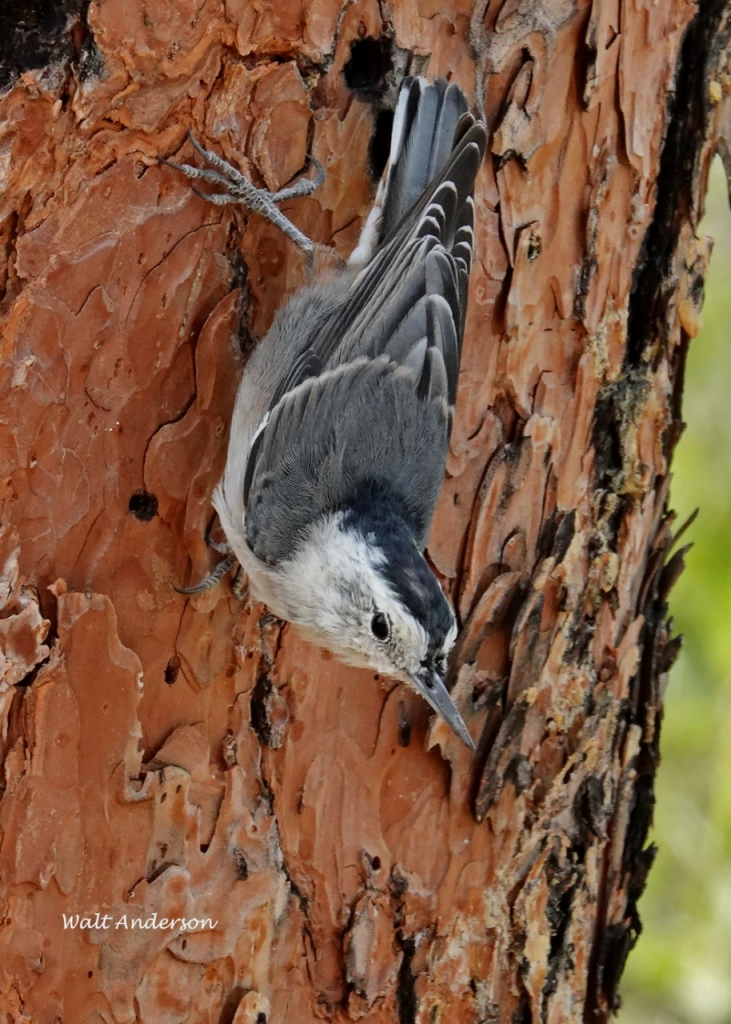
White-breasted Nuthatches anywhere in their large North American range are certainly recognizable, but there are subtle differences in coloration and habitat choices and large differences in vocalizations. Genetic testing reinforces those differences such that some experts think there may actually be four species, including one along the Pacific coast, one in the southern Rocky Mountain and Mexican ranges, one in the eastern Sierra Nevada and northern Rocky Mountains, and one in the East. The evidence is pretty convincing, but no official changes have yet been made by the distinguished committee of taxonomic bird brains.

The smallest of our nuthatches is appropriately named the Pygmy. They are very social, moving through pine forests in flocks emitting high-pitched peeps and titters. In cold weather, they may roost together in cavities and drop their internal temperatures, the only songbirds known to do this combination! A researcher found more than 100 individuals huddled together in a single cavity. No social distancing for these birds!
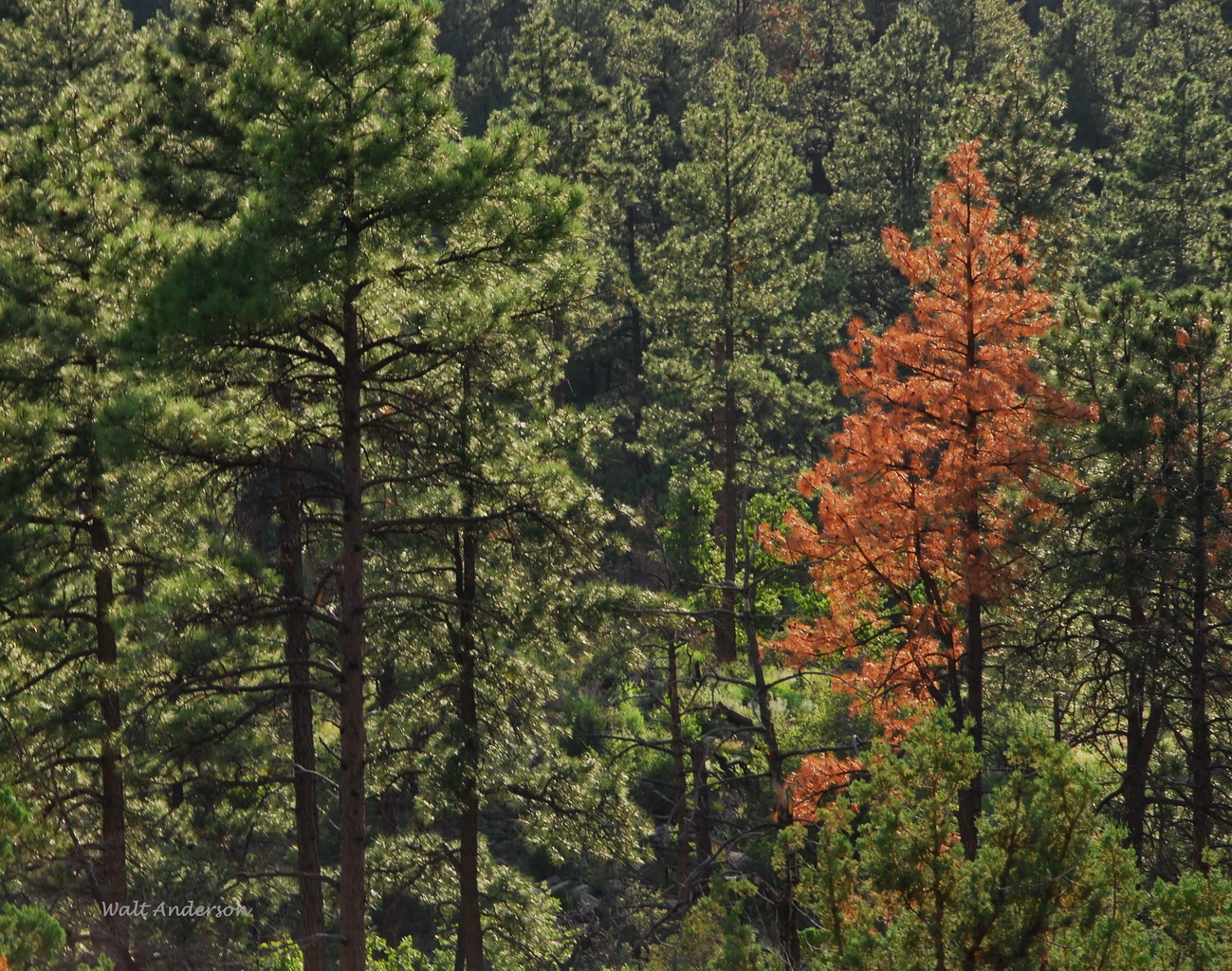
Pygmy Nuthatches in Arizona prefer Ponderosa Pines, especially tall, mature ones. In California, they use the similar Jeffrey Pine, and in Mexico, there is yet another long-needled pine that they occupy. Pygmy Nuthatches are considered an indicator species for the health of a Ponderosa Pine forest.
They differ from other nuthatches (and most North American songbirds) by often being cooperative breeders. Up to three yearlings, typically males, may stay with the breeding pair and provide nesting assistance. Of course, they are helping their siblings instead of starting families of their own that year. No one knows if nuthatches pine for lost mates.

Impressively acrobatic, the Pygmy Nuthatch is a generalized feeder, foraging through all parts of a pine tree and on nearby shrubs, such as this Fendler Ceanothus. Like other nuthatches, it scatterhoards individual food items in bark crevices or other hideaways, often concealing them with bits of bark or lichen, and returns later to feed upon them. The caches are insurance for times when acquiring fresh food is difficult. Tool use, such a rarity for a bird, has been documented. A bird in the Chiricahuas used a short twig to probe for insects, dropping the stick and grabbing the prey when it was detected. The number of bark beetles consumed by Pygmies can be significant.
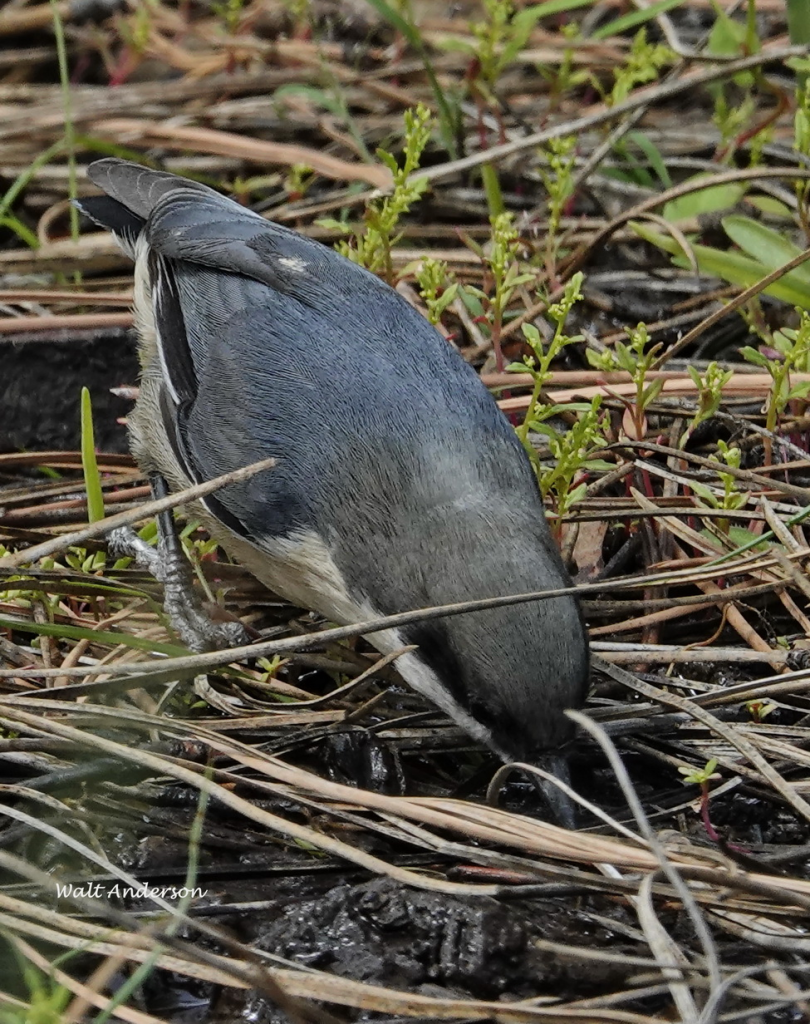
Like other nuthatches, the Pygmy may seek out water to drink, and this is sometimes hard to find in a dry forest of Ponderosa Pine. If you find a wet spot in the woods, sit a while quietly at a distance to see what might come in for a vital sip of water. You may not have to Sitta lone.
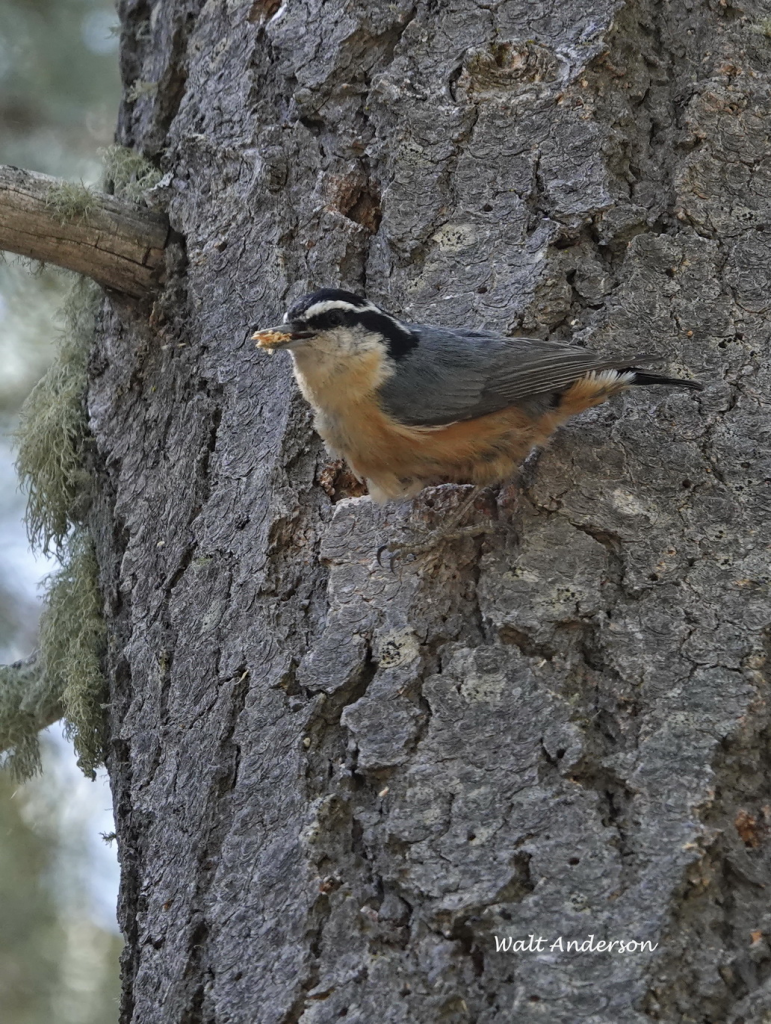
I love hearing the nasal “yank yank” calls of the classy Red-breasted Nuthatch. Both sexes sing, giving a “slow song” during pre-mating courtship and a “fast song” to defend territory. The birds are aggressively territorial around the nest, especially protective against House Wrens, known to destroy their eggs if given a chance. Here one is excavating its nest hole in the soft wood of a Douglas-fir snag.
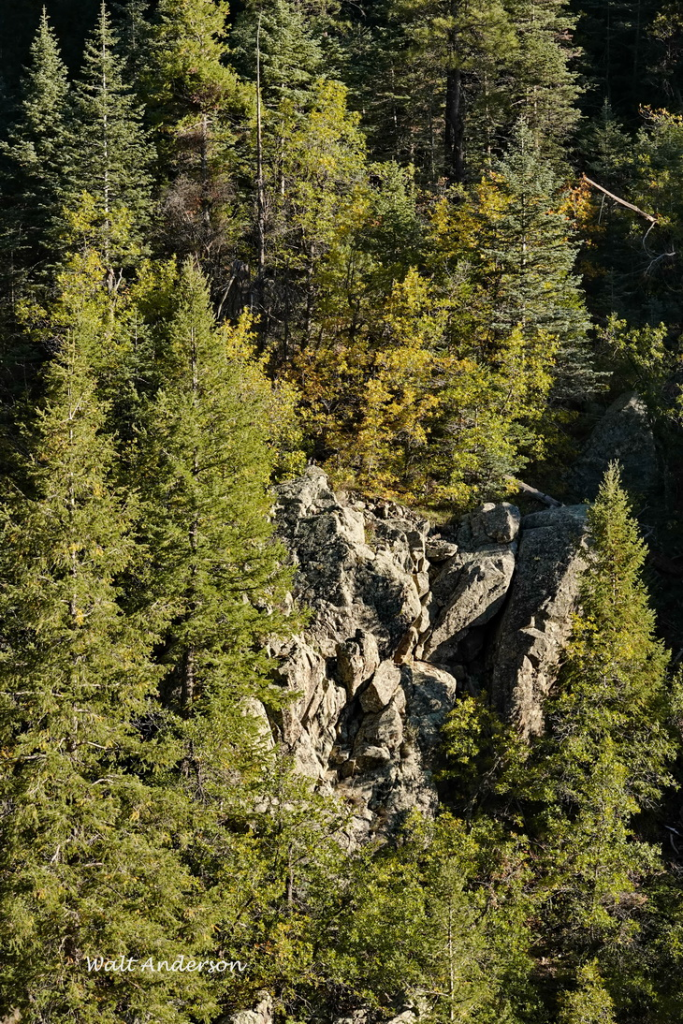
High-elevation mixed conifer forests (here with Douglas-fir, White Fir, Gambel Oak, and a few pines) suit the Red-breasted Nuthatch. In good years, they may feast on the caterpillars of spruce budworms, a good thing for the spruces! Food supplies occasionally fail, and the birds move south or downslope, sometimes even into the deserts. This makes them one of a number of “irruptive” species that birders watch for in certain years.
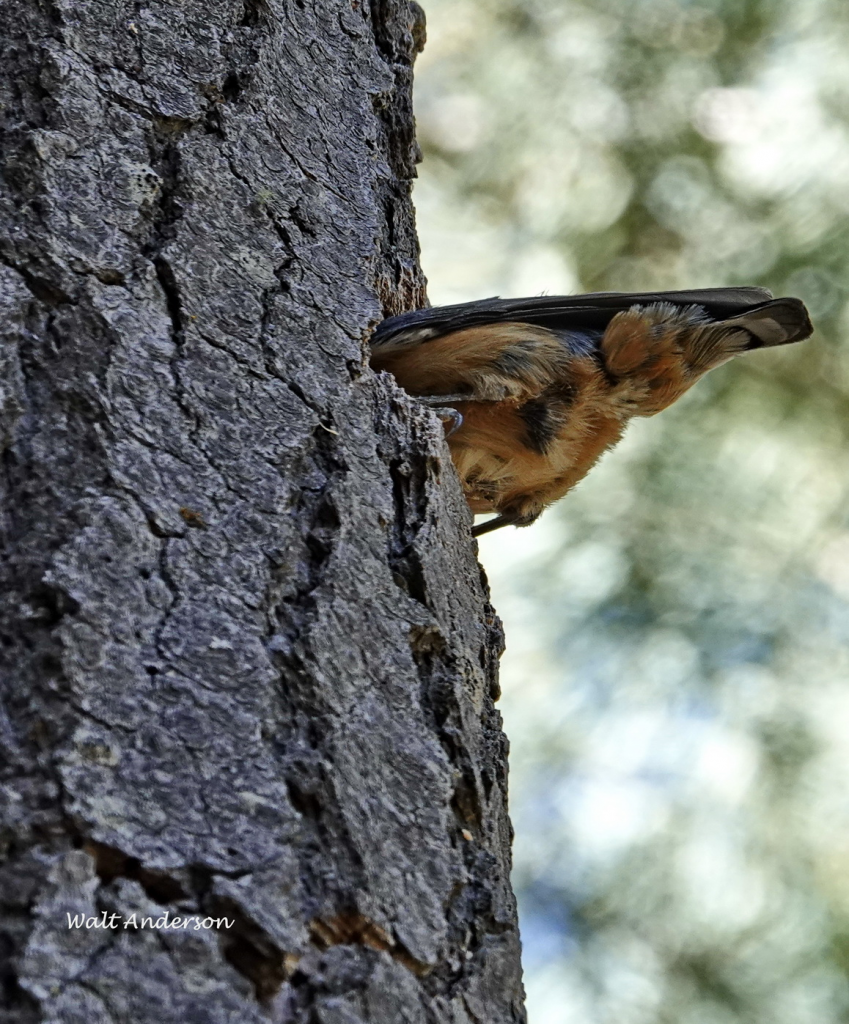
To further protect the nest (since all the eggs are in one basket), the Red-breasts spread sticky conifer resin (a high-pitched strategy) around the nest opening. This works against most intruders, though there are known cases of residents being caught in their own viscous traps.
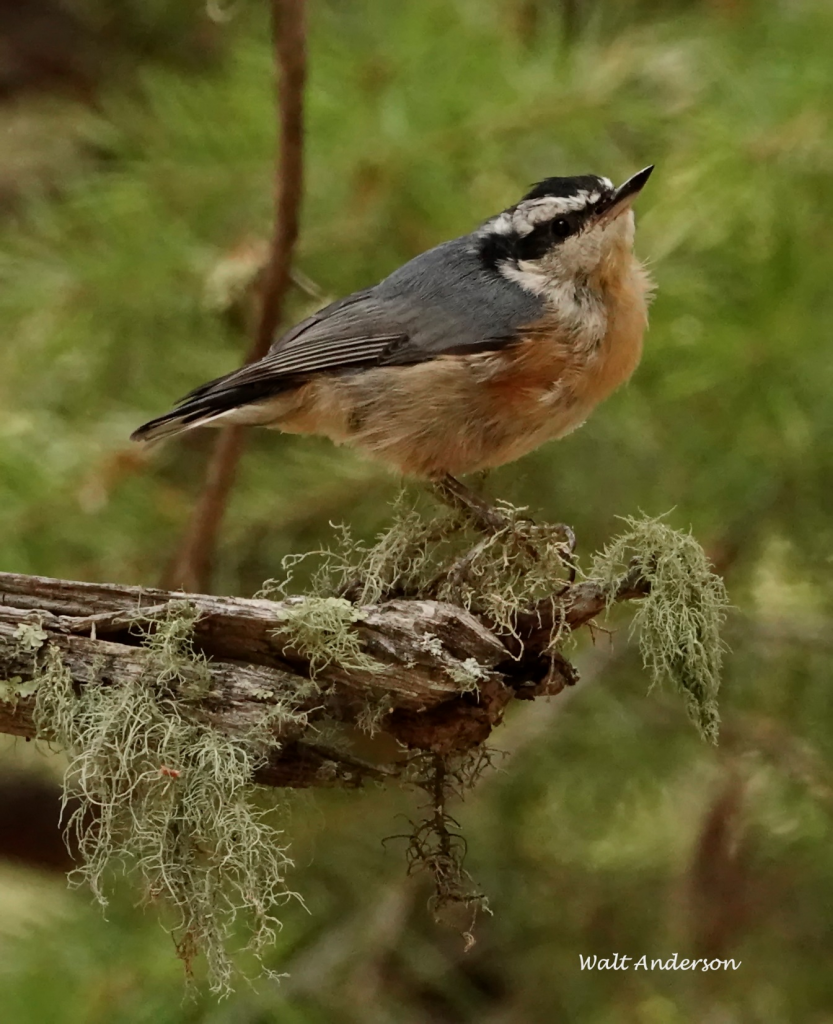
The closest relatives of nuthatches are the creepers, gnatcatchers, and wrens. All are charming little birds that make my day when I am lucky enough to watch them living their normal lives. They are easy to identify, unlike some of the sparrows and flycatchers (though if the White-breasted gets split formally, that will change!). If you live in the West, then by all means go experience the Nuthatch Suite.
